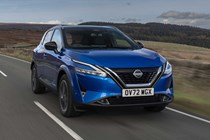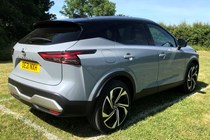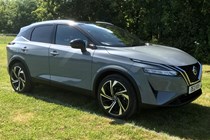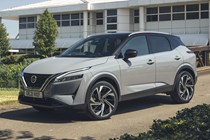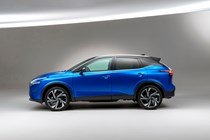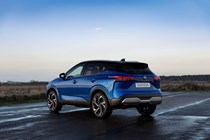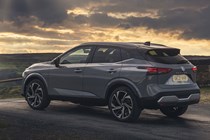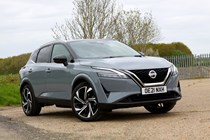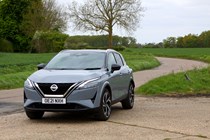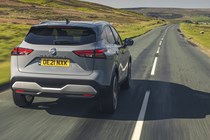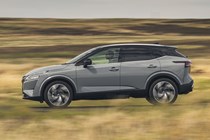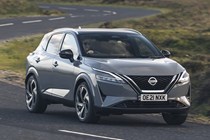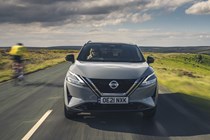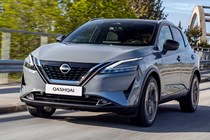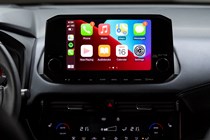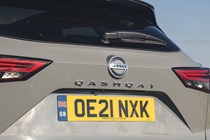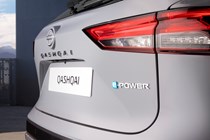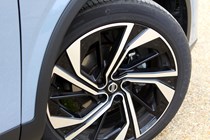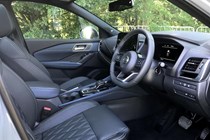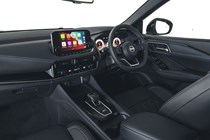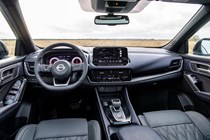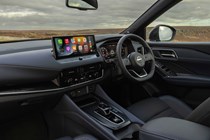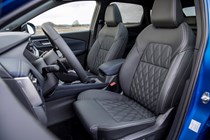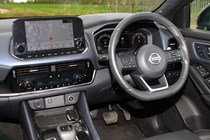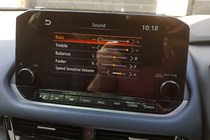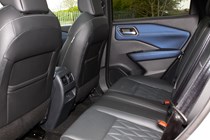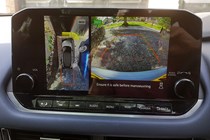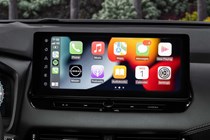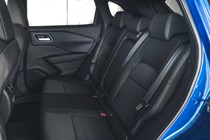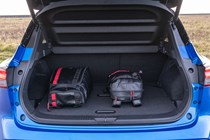
Nissan Qashqai engines, drive and performance
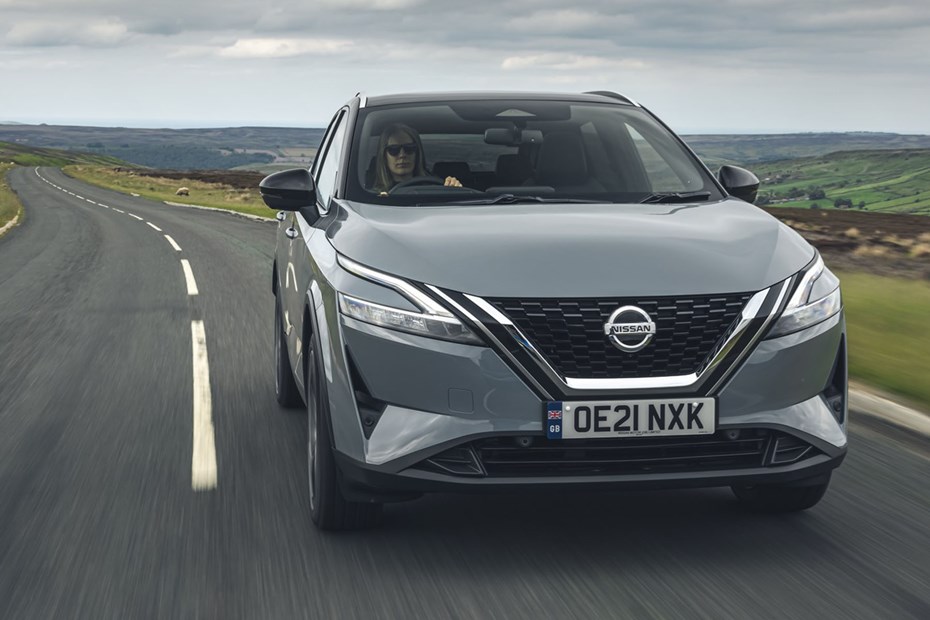
- All-petrol line-up, no plug-ins
- One mild hybrid, one full hybrid
- Brilliant E-Power hybrid model
Petrol engines
The Qashqai’s performance is reasonable no matter which model you choose – but it won’t set your pulse racing, nor are there any options for those looking for a high-power version. If you want a longer-legged Qashqai, you’re going to need to plump for the 190hp E-Power hybrid version, with the 158hp mild-hybrid preferable over the 140hp entry-level model.
Of the mild-hybrid petrols, we’ve tried the Qashqai in manual and automatic 158hp forms. In both cases, it’s a smooth and refined little engine that’s unobtrusive at low revs and settles down to a quiet hum at motorway speeds. Outright performance is on the pace for your money, although it feels less muscular in the mid-range than the 1.5-litre TSI in the Volkswagen Tiguan, especially in manual form.
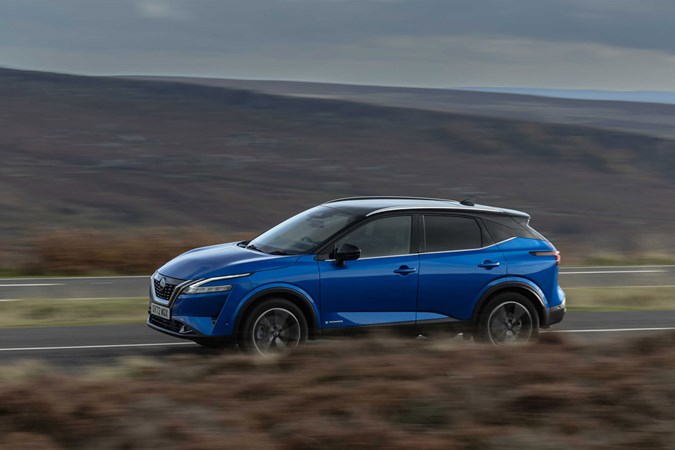
Out of the automatic and manual transmission versions, we prefer the former. The six-speed manual Qashqai certainly needs plenty of revs to get going, and can often get bogged down – for instance, if you try to pull away from walking pace in second gear, it almost fails to move forward at all. You’ll learn to drive around that, but it can be a little disconcerting at first.
The automatic is a CVT and other than the revs heading skywards when you floor the throttle at some speeds, it works responsively, especially on A-roads and the motorway.
Hybrid engine
The best engine option in the line-up is Nissan’s E-Power system. This is essentially a range-extender hybrid – though you’ll notice Nissan never calls it a hybrid in its marketing material – where the engine acts as a generator to charge the battery pack, which then drives an electric motor that drives the wheels. There is no conventional gearbox – which means fewer moving parts, and that results in better efficiency.
Nissan says you end up with a driving experience akin to that of an electric car, with instant throttle response and silent take off from rest. This isn’t strictly the case, as it doesn’t feel significantly differently to other hybrid systems, though does offer a smoother and quieter power delivery than rivals such as the Toyota C-HR.
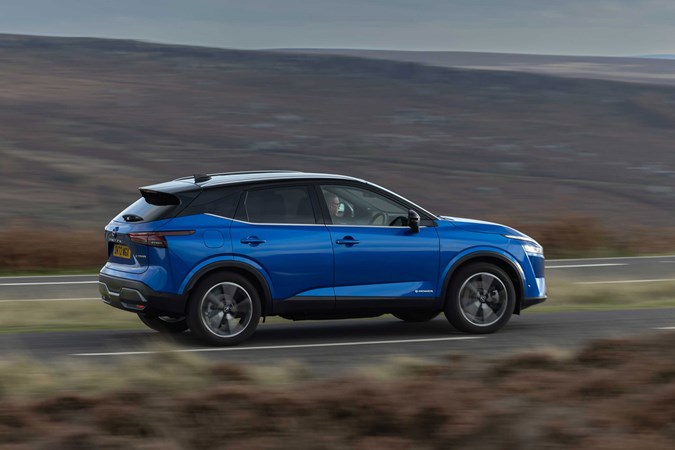
So, you get a silent take off from rest, a relaxed driving experience, and a lack of traditional sound cues to give away the impression of speed. It’s excellent around town, where it feels most at home. But on the move and at higher speeds, the Qashqai E-Power works better than most other full hybrids, because the engine doesn’t rev hard when you need more power, nor do you get the associated ‘mooing’ you get with some hybrids.
It will drive around 3-4 miles on pure electric power, which isn’t bad by self-charging hybrid standards, and is ideal for around town. Performance is fairly brisk, too, for a car of this type, with its smooth power delivery getting the car up to speed in a quiet and refined fashion, and 0-62mph being dispatched in 7.9 seconds.
What’s it like to drive?
- Handling is responsive, steering is sharp
- Firm suspension, without being uncomfortable
- Lots of road noise generated from larger alloy wheels
There was very little wrong with the way the outgoing Qashqai handled, and that continues with the new model, which has taken a noticeable step forwards. The steering is direct and well weighted, giving the driver plenty of confidence when placing it in bends, thanks to excellent body control and a lack of roll. The fairly lighter steering setup is clearly aimed more at city driving than a twisty back road, however.
The Nissan Qashqai has been tuned for responsive handling as well as comfort, so if you want the softest ride possible for your family SUV, you’ll need to look elsewhere – the Skoda Karoq and Volvo XC40 come to mind. But the Nissan is far from uncomfortable, and although it’s firm riding, it’s good at cushioning occupants from sharp surface irregularities, such as potholes and expansion joints.
We’ve tried the Qashqai on 19- and 20-inch alloy wheels, and there seems to be little difference between the two on typical UK roads and motorways. You get a more sophisticated independent rear suspension set-up with posher versions, which alleviates the firmer ride you’d normally get with larger wheels. From what we can see so far, it works very well.
One gripe we found with the Qashqai, at least on the larger alloy wheels, is that there’s lots of road noise generated, which is more noticeable at speed. It means, with the E-Power at least, the driving experience isn’t quite as refined and relaxing as it could be.


